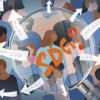How the SDG costing exercise can help meet the targets

The Sustainable Develop-ment Goals (SDGs) are some ambitious development objectives with a total of 17 goals with 169 targets spanning economic, social and environmental dimensions of sustainable development. To achieve the targets by 2030 will be a daunting task for a large number of developing countries in Asia, Africa and Latin America. Especially, the low-income and lower-middle-income countries are lagging behind others with respect to achieving a large number of targets envisaged in the SDGs. The Sustainable Development Report 2019, led by Prof Jeffrey Sachs, presents the SDG Index for all UN member-states to show how countries differ in SDG implementation. An analysis of the data of SDG Index for 162 countries suggests that countries with lower per capita GDPs have lower SDG indices. The high performers in the SDG Index are mostly from the high-income and upper-middle-income countries. Bangladesh has a ranking of 116 among the 162 countries. Rankings for other South Asian countries are as below: 153 for Afghanistan, 84 for Bhutan, 115 for India, 47 for the Maldives, 103 for Nepal, 130 for Pakistan, and 93 for Sri Lanka.
Similar to the era of Millennium Development Goals (MDGs), countries have a chance to show better performance during the SDGs period as well. There is a political buy-in, both at the global and national levels, to demonstrate that countries are on track to achieve SDGs by 2030. Governments of the developing countries have expressed their commitments towards achieving SDGs as one of their priority areas and have undertaken different initiatives. This provides a unique opportunity to put in some genuine efforts to achieve several of the important development targets of the SDGs in countries who are lagging behind considerably.
It should be mentioned that developing countries, especially the low-income and lower-middle ones, also face the problem of prioritising different SDGs. However, common problems in these countries include low or unsustained economic growth, low or stagnant private-sector investment, poor infrastructure, low level of industrialisation, a high degree of informal jobs, slow job creation, high incidence of poverty, growing overall and gender inequality, environmental degradation, etc. One of the fundamental challenges these developing countries face is making available the huge amount of resources required for meeting the aforementioned development targets. In this context, the SDG costing exercise can be very relevant.
What is the SDG costing exercise? It can have different meanings for different actors and stakeholders. To some, it can be an undertaking that produces reasonably detailed estimates of the costs needed to implement specific projects or sectoral plans in line with the targets of SDGs. To others, it can be a broader analysis to provide useful guidelines for policymakers about the resources needed to achieve the SDGs at the macro level.
Why is the SDG costing exercise important? It is important because there are only 11 years left to implement the SDGs, and for most of the developing countries, the resource requirement is huge. Therefore, without a comprehensive understanding of the resources required to implement different components of the SDGs, it becomes a difficult task for the countries to integrate SDGs into their national budgetary and planning processes. The SDG costing exercise can help accelerate the implementation of development efforts, facilitate discussions on integrated approaches to financing, identify fiscal space and resource mobilisation, assist in prioritising initiatives, raise public awareness, and offer the government new approaches of delivering through the cost savings as well as a synergistic strategy for implementation of the SDGs.
There is a need for synchronisation of costing across SDGs. Since there are critical interlinkages among different SDGs, it is important to look at integrated costing approaches which can deal with broad cross-sectoral synergies as opposed to any standalone calculation for specific SDGs. There is no denying that well-designed and integrated multisectoral approaches can be cost-effective, considering the resource constraints in the developing countries.
As mentioned before, there are serious challenges in financing resources for SDGs in most of the developing countries, especially given the fact that the capacity for domestic resource mobilisation is weak and the options for external financing are limited in many of these countries. Given the changing global scenario, for financing SDGs, developing countries will have to rely more on domestic sources, and this is, no doubt, a big challenge. Achieving SDGs also, therefore, requires systemic changes in the attitude and mechanisms in developing countries that govern and channel financing. It also requires exploring and exploiting the potential options of scaling up and diversifying financing opportunities commensurate with the ambition articulated in the SDGs. Developing countries need to explore all possible sources of financing including public, private, and public-private partnership, non-governmental organisations, foreign direct investment, foreign aid, and remittances. It is also important to note that mere generation of resources would not ensure a successful implementation of the SDGs if institutional and governance-related aspects are not properly addressed.
Dr Selim Raihan is Professor, Department of Economics, University of Dhaka, and Executive Director, South Asian Network on Economic Modeling (SANEM). Email: [email protected]

 For all latest news, follow The Daily Star's Google News channel.
For all latest news, follow The Daily Star's Google News channel. 








Comments